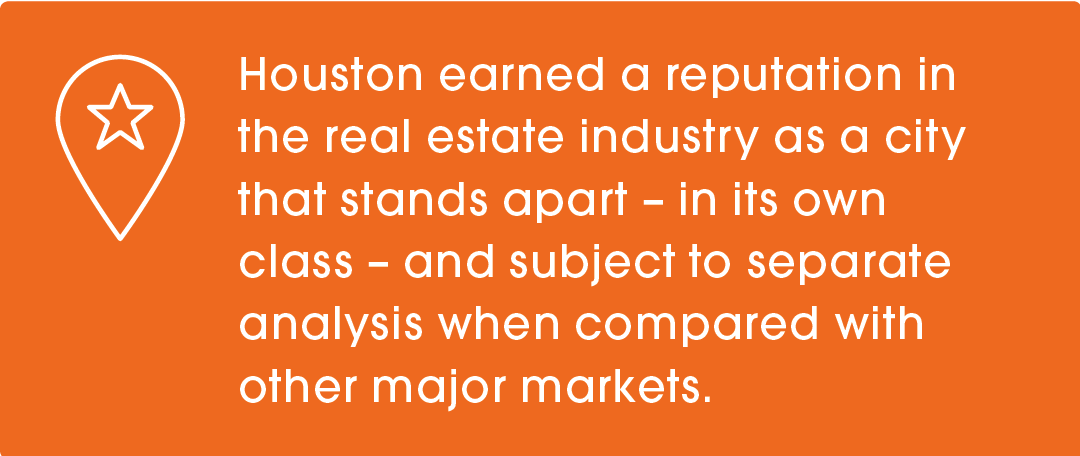With a deep understanding of your business alongside clear and honest communication, we help clients face challenges fearlessly.
Contact us today to learn more about our services and how we can help drive solutions.
Houston’s Growing Pains
February 21, 2019
Houston’s real estate roots are grounded in the city’s foundation as the world’s energy capital. This foundation is in part a coincidence of geography and history, and in part the result of Houston’s political and industry leaders of the early 20th century who recognized that energy companies did not have to be located right in Houston city limits, and in fact many were not.
To solidify Houston’s status as the worldwide energy leader, the city’s leaders capitalized on the abundant land available for development – helped in part by the lack of incorporated cities in close proximity to Houston – and resisted zoning restrictions. As a result, Houston was able to adjust quickly to needs in the market and became a favorable place for real estate development of all types, at least when times were good for the energy industry.

But times have changed. Over the last decade, Houston, its real estate landscape, and its economy have been evolving. While still recognized as the energy capital of the world, the city is more diverse, and its economy is not as connected to the ever-changing price of oil. Industries including health care, technology, manufacturing, and energy sectors beyond oil and gas, have provided a platform for growth. City planners and developers are taking a deeper look at the impact of this diversification on the city’s real estate dynamics and what is needed for the future.
Houston has grown in all directions. Although the suburban sprawl has not reached its limits, the end is in sight. Commuters are begrudgingly willing to drive an hour to work, but not 90 minutes or two hours, leading to an increased desire to live in an urban environment and resulting in denser development in the city, where undeveloped land is limited.
The growth of Houston continues to areas surrounding the city. Once far-flung towns such as Sugar Land, The Woodlands, Katy, and Pearland, they have grown into cities in their own right, and they are building their own economic centers that compete for office and retail developers who are attracted by the influx of residents. After all, “retail follows rooftops” as developers are fond of stating.
The real estate industry, investors and consumers are aware of what key players in other markets are doing to remain competitive and to increase profitability. Now, it is not enough to have an excellent location or competitive rent pricing. Amenities rule, and the desire for conveniences and preferences like food halls, park and trail connectivity, mobility solutions, an Instagram-worthy backdrop, and communal spaces, is strong.

Houston still faces several challenges in further development and luckily political and business leaders who could affect change recognize these challenges. One obvious major challenge is Houston’s mobility and transportation infrastructure. The increase in car ownership has mirrored Houston’s growth. Houston is a driving city with 95 percent of the vehicles on the road in Harris County occupied by a single person. The sprawled-out city was designed with cars in mind, and it is difficult to alter the cultural connection between individuals and their vehicles.
However, transportation improvements are under way. Highway and roadway expansions like the Post Oak Boulevard project and the I-69/I-610 interchange reconstruction are vital, although painful to endure.
Houston must also address its drainage infrastructure. The city adopted new development regulations, but it is too soon to gauge their impact.
Finally, Houston faces the potential of running out of attractive locations. Land is still abundant, but it is further away from economic centers. New projects – particularly commercial projects – are increasingly utilizing previously developed sites, which results in higher land cost and higher development costs. This pressure on expenses will ultimately affect Houston’s reputation for being an affordable place to live and work. Not being all that different from other markets can have a downside too.
Houston’s changes have occurred slowly, so the market has had time to adjust and to adapt, which results in relative stability. The stability will hopefully continue as the city addresses its challenges and embraces its future.
